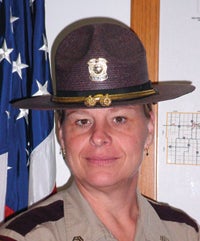What’s safer, a school bus or mom’s car?
Published 9:03 am Tuesday, September 17, 2013
Column: Ask a Trooper, by Jacalyn Sticha
Question: I was just told that it is more dangerous to drive my kids to school than having them ride the bus. Is this true?
Answer: Riding on a school bus is the safest way for your child to travel to and from school. Yes, safer than riding in a parent’s vehicle. The greatest risk is approaching or leaving the school bus — the 10 feet surrounding the bus is the danger zone.
• School buses are designed to be safer than passenger vehicles in avoiding crashes and preventing injury.
• School buses keep an annual estimated 17.3 million cars off roads surrounding schools each morning.
For children
• Stand six feet away from curb/roadway when waiting for bus.
• Wait for driver to say it is safe to board and use the handrails; do not wear loose items.
• Ask the driver for help if you dropped something when getting off the bus.
• Go directly to your seat and remain, facing forward. Only three children can be in a seat if the entire third student is on the seat and not in the aisle.
• Be respectful and quiet; the bus driver’s job is to safely drive the bus.
For parents
• Make sure children also look for traffic for themselves — left and right — making sure no one is passing the school bus on either side.
• The bus driver’s job is to operate the bus safely, and driving is a full time job. Instruct riders about respectful behavior and conduct on the bus while keeping voices down.
For vehicle drivers
• Scan roadways and sidewalks for buses and/or pedestrians constantly.
• Re-route yourself around school bus routes or leave earlier/later to avoid school buses.
• Look for lower speed zones and school zones — they are strictly enforced.
• Stop for the school bus if following or oncoming. If you are oncoming and there is a median or grass divide between you and the school bus you do not have to stop.
• Report school bus drivers you witness who do not use the system properly.
• Report to your school if children are standing in the bus. School buses may not have enough seats for students. (Seating for everyone must be provided.) School bus drivers should not move bus until everyone is seated.
• Learn the flashing lights on a school bus.
School bus lights
• Yellow flashing lights indicate the school bus is preparing to stop and so should you, and then stop, not getting closer than 20 feet at any time — do not creep up while waiting for stop arm to be pulled in.
• Red flashing lights and an extended stop arm mean the bus has stopped and children will be loading or unloading. Drivers must stop, and remain stopped, until the lights stop flashing, the stop arm is withdrawn, and the bus begins to move.
Jacalyn Sticha is a sergeant with the Minnesota State Patrol.


